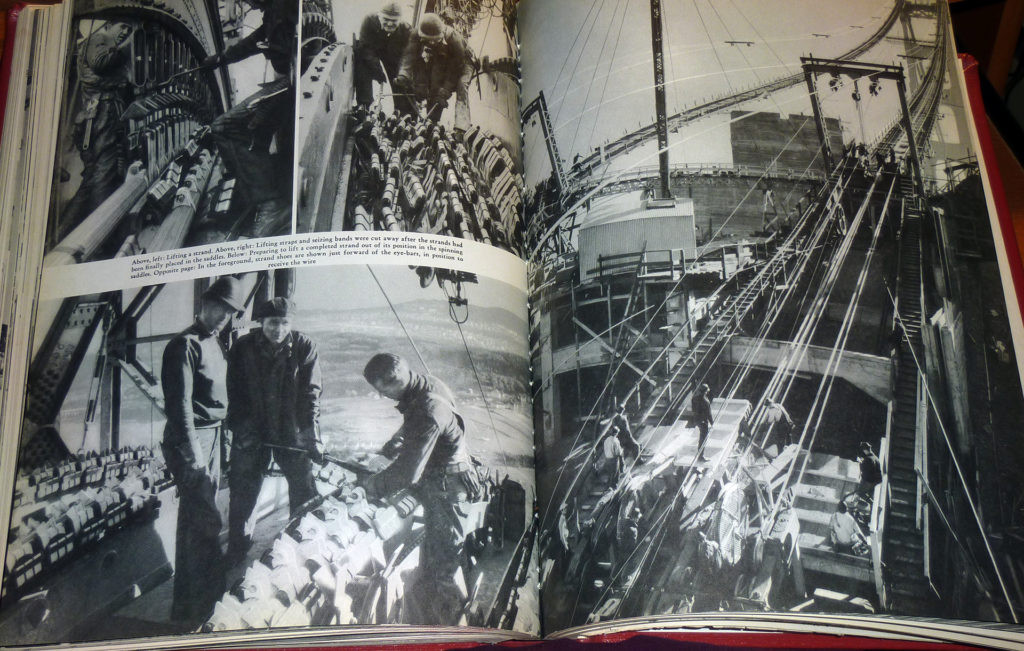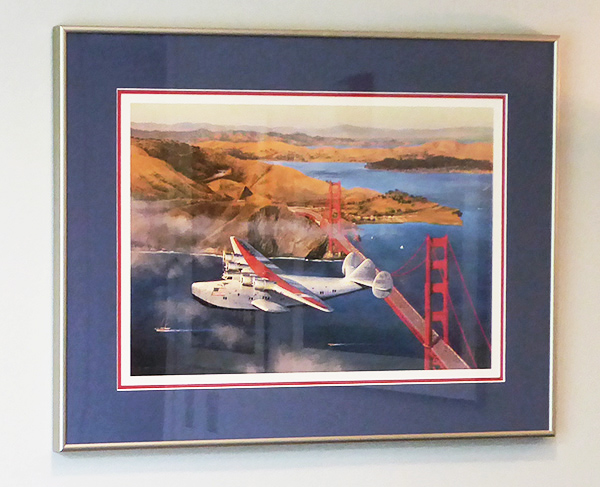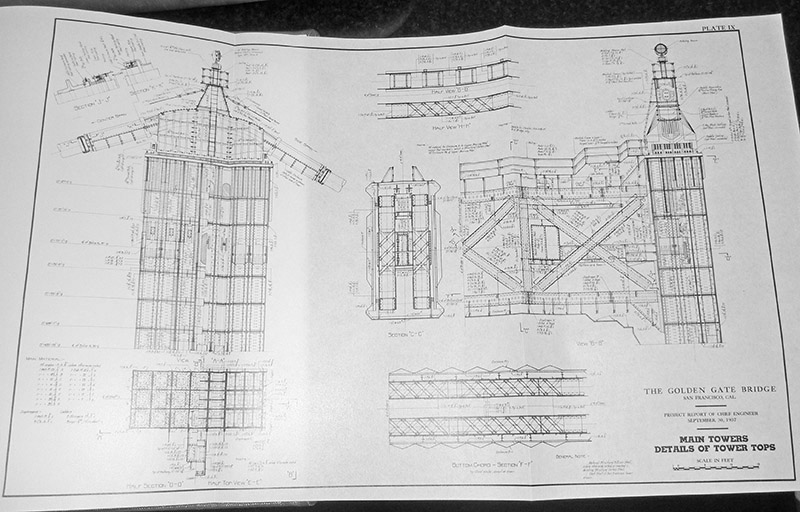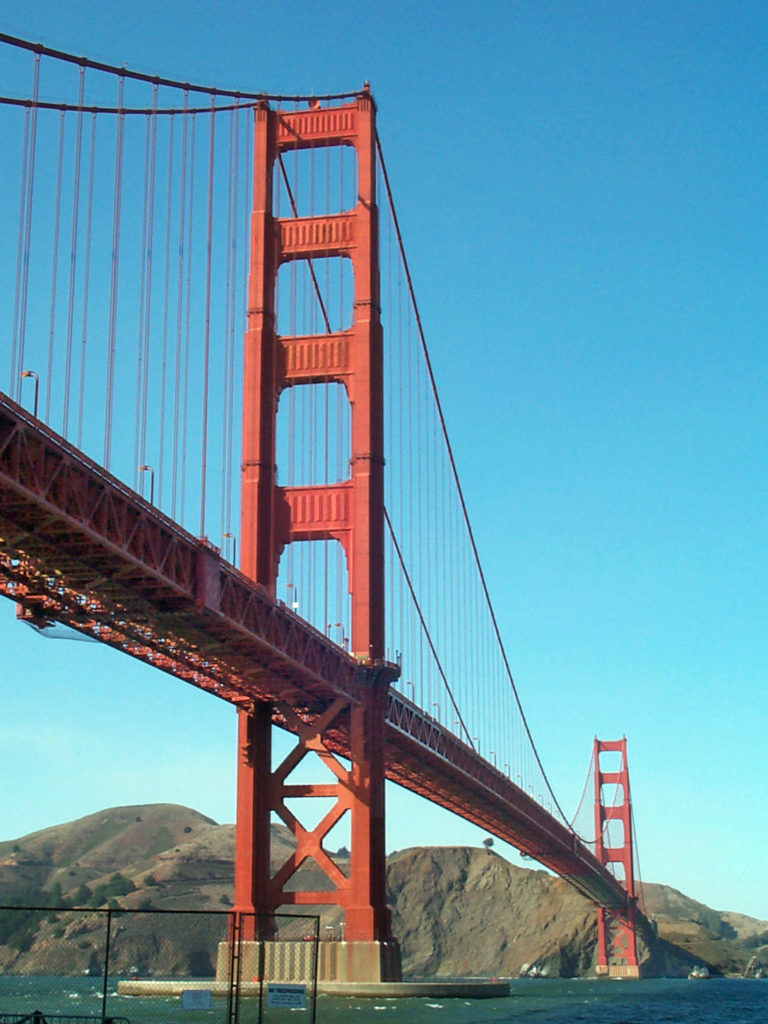
A print of “Clipper at the Gate” by William Phillips, which depicts Pan Am’s Boeing 314 “California Clipper,” is in my office
Ever wondered how much it cost to build the Golden Gate Bridge in the 1930s? US$35 million. To repeat it today? Engineers estimate it could be done for maaaybe a billion. The first four images below are from my 1938 copy of The Golden Gate Bridge: Report of the Chief Engineer to the Board of Directors of the Golden Gate Bridge and Highway District, a 300-page book published several months after the bridge opened that’s filled with dozens of construction photos you don’t often see elsewhere, treatises on methods and techniques, lots of fold-out engineering drawings, and the like.
Seven years after the original construction estimate in 1930, the actual construction costs came in $40,000 under. And here’s how they came up with the then astronomical sum of $35M in the middle of the Great Depression: public subscription. The people of the Bay area, tired of lengthy and expensive ferry journeys, really wanted that bridge. Good on them.
You can click any of these for a larger version. Following the excerpts from the book are a few photos I took of the bridge.
Halfway down this Internet Archive page, there’s a link to a PDF of the 1970 reprint edition of the Chief Engineer’s report. Looks precisely like my vintage copy: https://archive.org/details/goldengatebridge1970gold/mode/2up
I took these photos of my favorite bridge from, respectively, Fort Point, Crissy Field, and the deck of the tall ship Hawaiian Chieftain, which was based in San Francisco at the time. I’ve always used the Fort Point one as my phone background. These were taken with a paltry 2-megapixel Kodak DC-280 and so aren’t of the finest resolution, but they still look pretty good to me.
Click any of these for a larger size.
That small dish – actually about 10 feet in diameter – at the top of the tower on the San Francisco side is one of a back-to-back pair of microwave repeater antennas. There’s video of the 2,500-pound assembly being swapped out by helicopter in 2009 here: https://youtu.be/Kosw1yb2RFg

Marin tower; the building, on a spit of rock 150 feet in front of the tower, is what remains of the long-defunct Lime Point fog station and lighthouse
All of the deck suspension cables – also known as vertical suspender ropes – were replaced in the 1970s, and I have a slice of one of the original ropes. This four-inch long section is incredibly heavy for its small size at 2.1kg/4.6lbs, which says something about the quality of that steel. Each of the seven braids of the cable is, in turn, composed of thirty-two strands of steel, for a total of 224 strands in each cable.








































